
Many plants are ‘short-day’ plants, meaning that the plant starts to bloom once the days shorten. This is why horticulturists cut the amount of light from eighteen hours a day to twelve when they want to start the flowering phase. It’s actually a shame from the plant’s perspective: six fewer hours of light a day is six fewer hours of photosynthesis, and thus less energy for your plants in the form of sugars. There is also a substance that can get your plants blooming without your having to cut down on their light.
D. Kroeze, CANNA Research
What really happens when the days get shorter or when you cut back to 12 hours a day? When the light goes down to 12 hours or less, the leaves start to manufacture a substance that triggers flowering, which gets transported to all over the plant. This substance is called florigen or flowering hormone.
The term ‘short-day plant’ isn’t completely ac- curate. It’s not the fact that the days are getting shorter that makes the plant decide to flower, but that the nights are getting longer. Although the difference may seem trivial, it does explain why a night-time visit to your growing space will delay flowering for your plants. When you turn on the light, the plant’s night is over; it has now become too short to stimulate flowering. The plant has to start over counting the hours of darkness from zero.

Other short-day plants include maize, chrysanthemum and chicory. There are also long-day and day-neutral plants.
Examples of long-day plants are spinach, let- tuce and barley. One day-neutral plant is tobacco.
Julius and the discovery of florigen

In 1865 a German scientist named Julius von Sachs discovered that when he transferred sap from a flowering plant to a non-flowering plant, the non-flowering plant started to flower as well. This even happened when the two plants were from different species. Unfortunately, no matter what he tried, he never succeeded in isolating the substance responsible for flowering.
Many after him also have tried in vain to isolate florigen, which made it into something of a mystery. It got to a point where the question was not only what the substance actually was, but whether it even existed – at least until a few years ago. Now, one of the greatest mysteries of plant biology seems to have been solved.
Julius von Sachs (pictured top-left) made other major discoveries besides the existence of florigen. For example, he discovered chloroplasts and the fact that they produce sugar. He also discovered that glucose is stored in the form of starch in granules. In other words, the mystery of florigen was as old as much of the fundamental knowledge in plant biology.

Chloroplasts
The information superhighway
During the quest for florigen, it became clear that the sap flowing through the phloem (vessels) of the plant contained more than water and the sugars produced by photosynthesis in the leaves. As it turned out, many semiochemicals (substances that send signals to the plant) are dissolved in the phloem sap. These are mostly small molecules in very low concentrations. The phloem transports information from one place in the plant to another, including the signal to flower, in the form of these substances. This is why the phloem is also known as ‘the information superhighway.
Actually, florigen had been found a few years earlier, but its function had not been discovered until recently. You may wonder why it took so long to find florigen. Here’s the reason: Once the night length has crossed a certain threshold, the leaves produce a signal to start manufacturing florigen. The substance is only made in the growing points of the plant; a different substance, which reacts with the substance from the leaves, occurs only in the cells of growing points. The two substances together are actually the real florigen.
In addition, but no less important, is the fact that these are very tiny molecules, which were only discovered in the last few years. Until then, laboratory equipment was simply not advanced enough.
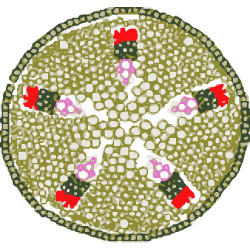 The phloem (red) is the living vascular tissue of the plant, through which mainly sugars and water are transported from the top down. Besides the phloem there is also xylem (pink), dead tissue that transports nutrients and water up from the roots.
The phloem (red) is the living vascular tissue of the plant, through which mainly sugars and water are transported from the top down. Besides the phloem there is also xylem (pink), dead tissue that transports nutrients and water up from the roots.
The future is smiling?
After more than 140 years, the quest for florigen is finally over. A great mystery has been solved. This is fine for science, but what does it mean for your average person? The answer is easy: a lot! Manipulating florigen has enormous potential.
Its discovery will bring about a revolution, in particular for conventional agriculture. Greenhouse horticulture will see increased yields from more hours of light. Scientists are especially thinking about growing crops in places where it was previously impossible, such as growing some tropical crops in Northern Europe. But a lot may change for tropical regions as well. The shortened growth time will mean that more crops can be grown in one growing season than is possible now.
Besides this immediate effect on food production, there will also be a revolution for seed companies. For example, fruit trees could be made to flower in the first year and so can be crossed with each other within months instead of the usual years breeders spend waiting for the first flowers.
For hobbyists, it will of course be the higher yields that make the applications of florigen most interesting.
We should not get carried away. It will be many years before we can make practical use of florigen. One thing is certain: its discovery will change agriculture and plant breeding forever.
From Gentech to hunger
Why the question mark after ‘the future is smiling?’ because florigen can’t simply be added to a plant. Biotechnology companies will have to provide crops with the information they need to make florigen themselves independent of day length, using genetic modification. Since this gene will initially be put into one or two crop varieties, these few varieties will quickly drive out local varieties (genetic erosion).
This will mainly be a problem for developing countries where agricultural production is now less than optimum, and where these new crops could greatly improve food production. At first, these monocultures of just a few varieties on such a huge scale will produce lots of food, but in the long term will lead to enormous problems from diseases. And what are you going to eat when the food crops are gone?
That’s the next challenge!
 In the 1880s Charles Darwin and his son Francis started experiments that finally confirmed the existence of plant hormones. They experimented with oats and the influence of light on the direction of growth. Auxin was the plant hormone whose processes were demonstrated during these experiments. Auxin is produced in the plant’s growing points both above the ground and in the roots. Auxin influences water absorption, cell division, and cell stretching (it softens cell walls) among other things. Because auxin promotes the formation of roots on stems it is used in a variety of forms in rooting hormones.
In the 1880s Charles Darwin and his son Francis started experiments that finally confirmed the existence of plant hormones. They experimented with oats and the influence of light on the direction of growth. Auxin was the plant hormone whose processes were demonstrated during these experiments. Auxin is produced in the plant’s growing points both above the ground and in the roots. Auxin influences water absorption, cell division, and cell stretching (it softens cell walls) among other things. Because auxin promotes the formation of roots on stems it is used in a variety of forms in rooting hormones.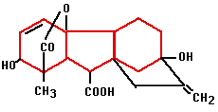 Gibberellin was first isolated in 1935 in Japan by Yabuta. The gibberellin was acquired from a fungus that had been the cause of reduced productivity for Japanese rice farmers for centuries. The gibberellin initially gave better growth but later in the season, it caused sterile fruits. Generally speaking, gibberellins work as growth accelerators because of cell stretching and cell division. They ensure that seeds germinate and flowers form in plants that need long days. Gibberellin is often used in the cultivation of fruit to help unfertilized pears and apples develop fully.
Gibberellin was first isolated in 1935 in Japan by Yabuta. The gibberellin was acquired from a fungus that had been the cause of reduced productivity for Japanese rice farmers for centuries. The gibberellin initially gave better growth but later in the season, it caused sterile fruits. Generally speaking, gibberellins work as growth accelerators because of cell stretching and cell division. They ensure that seeds germinate and flowers form in plants that need long days. Gibberellin is often used in the cultivation of fruit to help unfertilized pears and apples develop fully. Cytokinin activity was first demonstrated in 1913. 30 years later it was discovered that a natural substance present in coconut milk was capable of helping plant cells multiply. Cytokinin was the responsible hormone for this. Cytokinin is known as the hormone responsible for cell division. It stimulates the metabolism and the formation of flowers on side shoots and as such is a counterpart to auxin. The cytokinin concentration is highest in young organs (e.g. seeds, fruits, young leaves, and root tips). High concentrations in an organ or tissue will stimulate the transport of sugars to those tissues or organs.
Cytokinin activity was first demonstrated in 1913. 30 years later it was discovered that a natural substance present in coconut milk was capable of helping plant cells multiply. Cytokinin was the responsible hormone for this. Cytokinin is known as the hormone responsible for cell division. It stimulates the metabolism and the formation of flowers on side shoots and as such is a counterpart to auxin. The cytokinin concentration is highest in young organs (e.g. seeds, fruits, young leaves, and root tips). High concentrations in an organ or tissue will stimulate the transport of sugars to those tissues or organs. The practical use of ethylene comes from the time of Old Egypt when figs were scored to make them ripen faster. In 1934 it was discovered that plants produce ethylene themselves, which enables them to regulate fruit ripening. Ethylene is the least complex plant hormone from the molecular point of view and is produced by all organs. It is a gaseous hormone that is transported via the spaces between plant cells. It is responsible for fruit ripening, inhibition of growth, and leaf abscission (shedding). Ethylene has a stimulating effect on flower formation with certain types of plants (i.e. pineapples, mangoes, and lychees). Administering ethylene results in smaller plants and flowering finishes a lot quicker. The flowers ripen too quickly and consequently remain small.
The practical use of ethylene comes from the time of Old Egypt when figs were scored to make them ripen faster. In 1934 it was discovered that plants produce ethylene themselves, which enables them to regulate fruit ripening. Ethylene is the least complex plant hormone from the molecular point of view and is produced by all organs. It is a gaseous hormone that is transported via the spaces between plant cells. It is responsible for fruit ripening, inhibition of growth, and leaf abscission (shedding). Ethylene has a stimulating effect on flower formation with certain types of plants (i.e. pineapples, mangoes, and lychees). Administering ethylene results in smaller plants and flowering finishes a lot quicker. The flowers ripen too quickly and consequently remain small.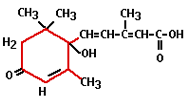 Abscisin was first isolated in 1963 and has the Latin word abscissio (breaking off) to thank for its name. This is because people thought that abscisin was responsible for the breaking off (shedding) of leaves and fruits, however, it was later shown that ethylene plays a much more direct role in this.
Abscisin was first isolated in 1963 and has the Latin word abscissio (breaking off) to thank for its name. This is because people thought that abscisin was responsible for the breaking off (shedding) of leaves and fruits, however, it was later shown that ethylene plays a much more direct role in this.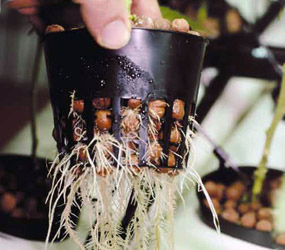 As mentioned, the root system will only increase in volume for as long as the rest of the plant continues to grow. However, transpiration from the leaves can also cause more roots to form in order to pump up the water needed. In the end, an equilibrium is established between the roots and the plant. A general rule of thumb is that the root system should comprise 30% of the total plant volume. Although this rule applies fairly consistently to plants in the open air, in substrate culture this does not always have to be the case. You can grow large plants in small pots as long as you supply them with water and nutrients and do not allow the pot to get too dry or too wet. To reduce the chance of this happening, we advise a large medium volume.
As mentioned, the root system will only increase in volume for as long as the rest of the plant continues to grow. However, transpiration from the leaves can also cause more roots to form in order to pump up the water needed. In the end, an equilibrium is established between the roots and the plant. A general rule of thumb is that the root system should comprise 30% of the total plant volume. Although this rule applies fairly consistently to plants in the open air, in substrate culture this does not always have to be the case. You can grow large plants in small pots as long as you supply them with water and nutrients and do not allow the pot to get too dry or too wet. To reduce the chance of this happening, we advise a large medium volume.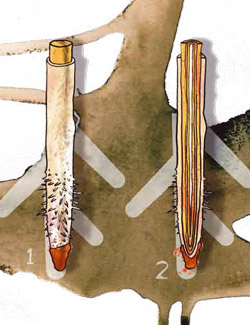
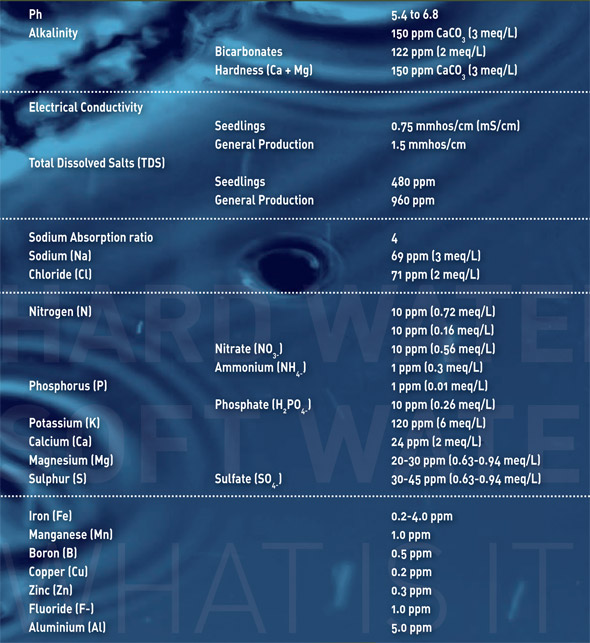
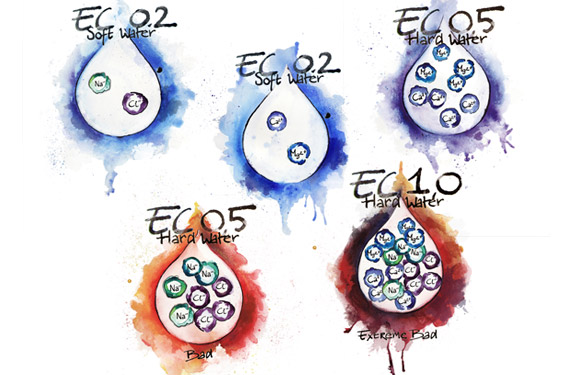


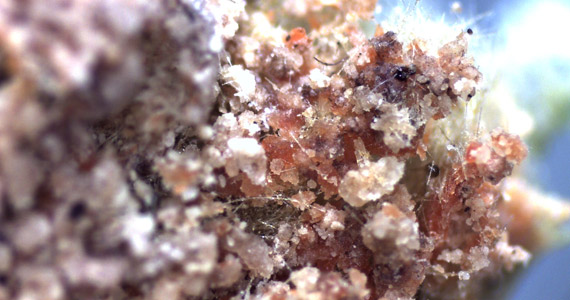
 Pythium infection on tomato roots in coco coir.
Pythium infection on tomato roots in coco coir.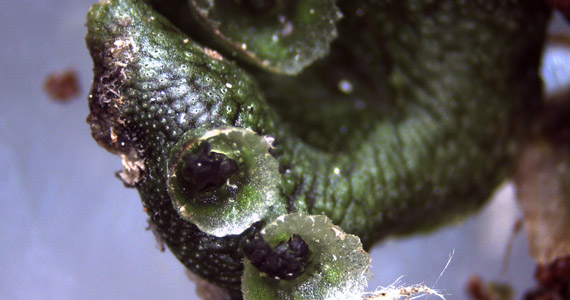
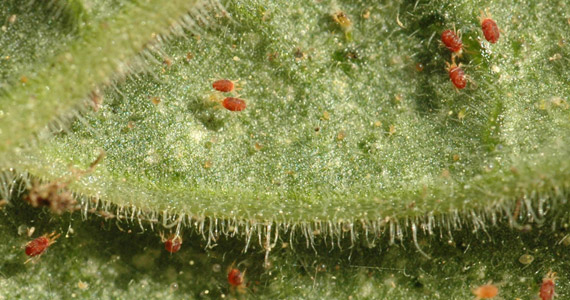
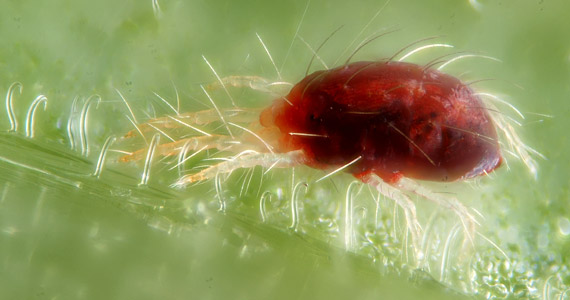
 The whitefly usually lays its eggs on the underside of the leaves and the eggs stick to them by means of a pedicel. The larva or nymphs emerge from the eggs and in their first stage of development, they are mobile enough to move along the leaf until they find the right place to insert their stylus and begin to feed off the sap of the phloem, which is rich in sugars. The nymphs then pass through several more stages of development, during which they remain in the same place and continue to feed off the plant until the adult emerges from the last nymph stage. Non-fertilized eggs produce males while the fertilized eggs produce females.
The whitefly usually lays its eggs on the underside of the leaves and the eggs stick to them by means of a pedicel. The larva or nymphs emerge from the eggs and in their first stage of development, they are mobile enough to move along the leaf until they find the right place to insert their stylus and begin to feed off the sap of the phloem, which is rich in sugars. The nymphs then pass through several more stages of development, during which they remain in the same place and continue to feed off the plant until the adult emerges from the last nymph stage. Non-fertilized eggs produce males while the fertilized eggs produce females. One of the main objectives when controlling whitefly is to avoid the crop being infected by any virus that the insects may be carrying. It is therefore important that, any weeds or remains of other plants, near the crop are removed because these can act as a habitat for whitefly. Furthermore, if a whitefly feeds off a weed that has a virus and then reaches your crop, the virus can easily spread. The use of protective barriers such as nets and covers are also a good option for preventing infestations.
One of the main objectives when controlling whitefly is to avoid the crop being infected by any virus that the insects may be carrying. It is therefore important that, any weeds or remains of other plants, near the crop are removed because these can act as a habitat for whitefly. Furthermore, if a whitefly feeds off a weed that has a virus and then reaches your crop, the virus can easily spread. The use of protective barriers such as nets and covers are also a good option for preventing infestations. Most of the predators used feed on the eggs and nymphs of the whitefly. This category includes the Delphastus catalinae beetle. The chrysopidae larva and some bedbugs are also good biological controllers of this pest.
Most of the predators used feed on the eggs and nymphs of the whitefly. This category includes the Delphastus catalinae beetle. The chrysopidae larva and some bedbugs are also good biological controllers of this pest.